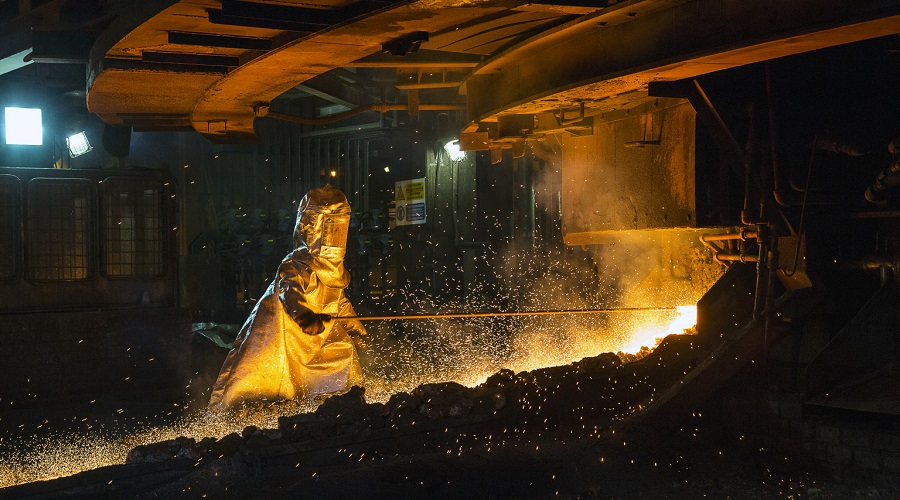
Nickel smelter in Sorowako, Indonesia. (Image by Marcelo Coelho, courtesy of Vale).
(The views and opinions expressed herein are the views and opinions of the author, Andy Home, a columnist for Reuters.)
Nickel and zinc are now deemed critical minerals by the United States.
SIGN UP FOR THE BATTERY METALS DIGEST
The US Geological Survey (USGS) is proposing both metals be included in the redrafted critical minerals list. The list has grown from 35 to 50 since the last iteration in 2018, but that largely reflects the splitting out of rare earth elements and precious group metals into separate entities.
Four minerals – helium, potash, rhenium, and strontium – have been dropped. The United States is the world’s leading producer and net exporter of helium, while import dependency for the other three is mitigated by “low disruption potential”. Uranium was also dropped after being reclassified as a “mineral fuel”.
Nickel and zinc are the only two new additions, and each reflects an evolution of the methodology used to determine whether a mineral is critical to the well-being of the US economy.
Single point of failure
According to the USGS, the United States relies on refined nickel imports for around half of its annual consumption.
The top three suppliers last year were Canada (42%), Norway (10%) and Finland (9%) – all deemed “friendly” countries.
This relatively benign supply profile kept nickel off the critical minerals list in the past.
But it’s now included for two reasons.
Firstly, the USGS has expanded its criticality criteria to look beyond trade dependency to domestic supply, particularly what it calls “single points of failure”.
There is currently only one domestic operating nickel mine in the United States – the Eagle mine in Michigan – which exports concentrates for overseas refining.
There is a single producer of nickel sulphate, but only as a by-product of precious group metals production.
This limited domestic nickel production base was also highlighted in the Biden Administration’s 100-day review of critical supply chains, which recommended the government should invest as a priority in a new nickel refinery.
The second reason is nickel’s changing usage profile from alloy in stainless steel production to chemical component in electric vehicle batteries.
The combination of limited, single-point-of-failure domestic supply and the expected demand growth from battery manufacturers makes “a compelling case for inclusion” of nickel in the critical minerals list, the USGS noted.
Or, as the supply-chain review put it, not having enough battery-grade nickel “poses a supply chain risk for battery manufacturing globally, not just in the United States”.
Zinc concentration
The United States’ domestic supply chain of zinc is less fragile.
The country has 14 operating mines and three smelter facilities, one primary and two secondary, one of which resumed operations in 2020 after several years of inactivity.
However, the country’s refined zinc import dependency is relatively high. Imports of 710,000 tonnes last year represented 83% of domestic consumption, according to the USGS.
Global supply trends make this problematic.
“For zinc, global mine and smelter production concentration has increased notably during the past few decades,” the USGS said, adding that “this change has been driven mainly by increased production in China”.
Part of the thinking behind the latest critical minerals list is moving the analysis beyond simple import dependency to encompass broader global supply trends.
The more supply is concentrated in one country, the higher the potential risk factor, particularly if that country is designated a mineral competitor, as is the case with China.
Zinc’s supply risk is now above the 0.40 threshold used by the USGS to help determine criticality at 0.48.
Top of the supply-risk table are gallium, niobium and cobalt, followed by several rare earth elements.
Aluminum lies in eighth place with a score of 0.60, thanks to the concentration of smelting in China, and tin is also on the supply risk spectrum with a score of 0.50.
A continuum of supply risk
The USGS stresses that falling below the 0.40 cut-off point doesn’t mean there is no supply risk.
“The metrics developed with (the new) methodology are best viewed as a continuum of supply risk”, and one which is continuously moving as global supply chains for each commodity evolve, it said.
Out of the major industrial metals traded on the London Metal Exchange, only two are now not deemed critical minerals by the United States.
Copper has a low supply-risk profile due to a large domestic mining, smelting and recycling industry.
Lead is more interestingly poised on the USGS supply-risk table with a score of 0.39, just below the cut-off point, again due to a growing concentration of global mining and smelting capacity in China.
None of these industrial metals feature on the European Union’s critical minerals list.
In part that’s a reflection of Europe’s domestic production base both at the mining and smelting level.
But in part it may be because the USGS is ahead of its European peers in analysing global supply patterns and the resulting potential threats to critical minerals availability.
Nickel and zinc may not spring to mind when most people think of critical minerals, but as far as the United States is concerned, they both are.
(Editing by Jan Harvey)






